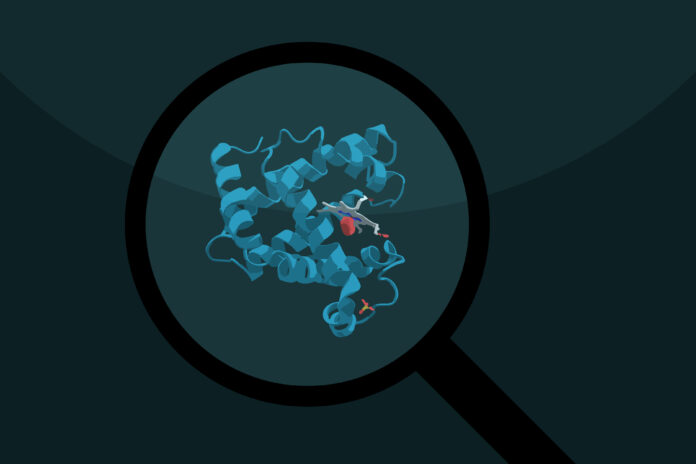Research in protein analysis uncovers new ways to learn new information regarding crimes
Police officers, detectives and investigators arrive at a crime scene. All the evidence seems to be gone except for a couple of human teeth and a few strands of hair. Thanks to the work of Glendon Parker and Robert Rice, professors in the department of environmental toxicology, and their teams, even scarce evidence like this could help link perpetrators to a crime. Using proteomics, researchers have discovered new ways to identify people from hair, teeth, skin and ancient bone samples.
“The joint effort of both the Rice and Parker labs have resulted in sex estimation from teeth, human identification from skin, human identification from hair, and even work with ancient bone,” said Zachary Goecker, a fifth-year doctoral student from the pharmacology and toxicology program in the department of environmental toxicology, in an email.
Proteomics involves the large-scale analysis of the protein component of a cell, tissue or an organism, said Julia Yip, a UC Davis class of 2018 graduate from the forensic science graduate program, via email. To study proteins, researchers break down proteins from a tissue, then analyze the sample through mass spectrometry, a technique that measures the mass-to-charge ratio of ions.
“What we do is we discover, characterize and work at ways to detect a certain set of peptides that change as a result of someone’s genetics,” Parker said. “These are single amino acids that are swapped out. Then we can get a pretty big chunk of information that should have been in their DNA.”
Proteomics can be applied to a variety of aspects in forensic science. Human identification, ancestral classification, and body fluid identification are some of the more developed research topics, Goecker said.
One goal of the research is to give the forensic community an alternate method when traditional DNA method fails, according to Yip.
“For the Parker lab, we are specifically looking at the use of proteomics in scenarios where it might be challenging for traditional forensic analysis to obtain usable results,” Yip said.
According to Parker, traditional forensic anaylsis cannot always dechiper information obtained from hair, degraded bone, fingerprints, teeth and sexual assault cases, so that is why the lab focuses on these types of evidence.
“As hair is made, it shreds up its DNA, so that means it’s now less useful to get these profiles using DNA,” Parker said. “For degraded bone, if it’s in a certain environment, it will often have a lot of DNA, but it also may not. For fingerprints, they’re very variable since we are in contact with people all the time, dust is in the environment, and you are more likely to get mixtures and it’s really hard to interpret. With sexual assault evidence, you have mixtures and the victim’s DNA dominates.”
According to Rice, hair used to be widely used as evidence when investigating crimes.
Investigators used to try to link suspects to hair found at crime scenes. Experts used to analyze hair under microscopes, but that is now understood to be ineffective.
“There have been a lot of people convicted of crimes because their hair looked the same as the hair found in the crime scene,” Rice said. ”It turns out many of those people have now been exonerated. Those hair identifications, nobody believes them anymore, and so you have a substantial amount of people who should not be imprisoned.”
Since teeth are the hardest and most robust skeletal tissue, they often preserve the best, said Jelmer Eerkens, a professor in the department of anthropology, via email.
Eerkens helps Parker develop research techniques and figure out how to apply it in real-world settings. His main interest is in applying the proteomics techniques to historic cases, rather than forensic ones.
“Back in 2017, there was a small child found buried in the backyard of a house in San Francisco,” Eerkens said. “It turns out the house is built on an old cemetery dating to the 1800s, and when the cemetery was moved in the 1930s, they missed some graves. We used a range of different techniques, including proteomics, stable isotopes, and ancient DNA, to identify the girl. We now know her name is Edith Cook, and she died in 1876 of disease when she was about 3 years old. We were also able to find a distant living relative.”
Without these “archaeoforensic” techniques, researchers would not have been able to figure out the young girl’s identity, according to Eerkens.
Goecker’s role so far in the lab has been to optimize the chemical processing of human hair for proteomic analysis, develop tools for automated searches and the calculation of random match probabilities and determine ancestral classification. Additionally, Goecker has presented this research at meetings including the American Academy of Forensic Sciences, International Symposium on Human Identification and the Green Mountain DNA conference.
“One of our goals is to help provide the field with easy-to-use tools to get started with proteomic genotyping,” Goecker said.
Yip was involved in the development of the proteomics based method on estimating sex of an individual using teeth enamel for her master thesis. She applied Parker’s method to teeth and was able to develop a framework for estimating sex.
“Male teeth had peptides from a Y-chromosome protein,” Yip said. “Female teeth had only the X-chromosome form so we depended on a calibration curve we developed that could give an estimation of female sex.”
Funding for the research comes from the National Science Foundation, according to Eerkens.
“The research is ongoing and has many hurdles to leap before becoming forensic practice,” Goecker said. “The findings of our research have been very exciting so far. Recently, we have reported obtaining random match probabilities of up to 1 in 624 million from a single hair less than an inch in length. We are hoping to break the 1 in a billion barrier soon for a single hair.”
Written by: Margo Rosenbaum — science@theaggie.org




